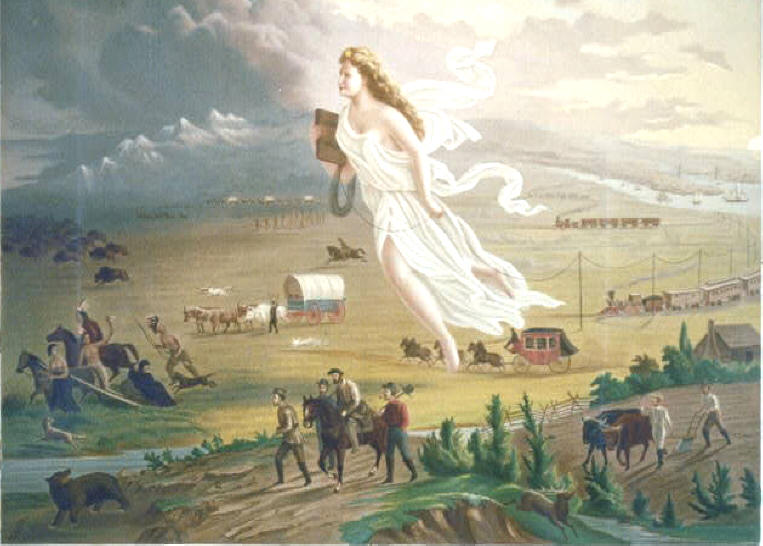| Manifest Destiny |

Gast, John. Manifest Destiny. 1872. History on the Net,com. Web. 24 June 2010.
|
 Gast, John. Manifest Destiny. 1872. History on the Net,com. Web. 24 June 2010. |
Links: |
One of the skills learned in social studies is the ability to analyze and interpret primary sources. In small groups, you will move through four stations and complete the following tasks. Each group will have 15 minutes at each station and group members may help each other explore the answers to the questions, but each member must turn in his/her own papers. Station One: Read pages 406-407 in your text book and answer the following questions: 1. Why did Americans want to settle the lands in the West? 2. What is meant by Manifest Destiny? 3. What does John O’Sullivan mean in the "Voice from the Past" section on pg. 407? Station Two For this station you will look at two paintings that symbolize certain aspects of Manifest Destiny. In the first painting titled “Westward the Course of the Empire” by Emanuel Gottlieb Leutze, you will look at two interpretations of items in the painting and describe what is in the painting that may have led the author to come up with these interpretions. 1. The journey was very difficult. 2. The pioneers were going from a place with little hope to a shiny new land full of promise. (To view the painting, clink the proper link (Westward the Course of the Empire”) in the link section of this page.) Hints: Look at things like color, light and dark, expressions on the faces of the pioneers in different parts of the painting, the landscape etc. From the Smithsonian American Art Museum, Westward the Course of Empire Takes Its Way (mural study, U.S. Capitol) 1861 Emanuel Gottlieb Leutze http://americanart.si.edu/collections/search/artwork/?id=14569 Click on the link to the second painting titled, “Manifest Destiny An Allegorical”, painted by John Gast in 1872. You will give 4-6 examples of symbolism that depicts the idea of Manifest Destiny. Explain why you have interpreted the items the way you did. Station Three Click on the link titled, Excerpts from Adams and OSullivan. One member of the group should read the excerpts from John Quincy Adams, and John O’Sullivan, the group should discuss the quotes, and each member should then answer the questions with complete sentences. |